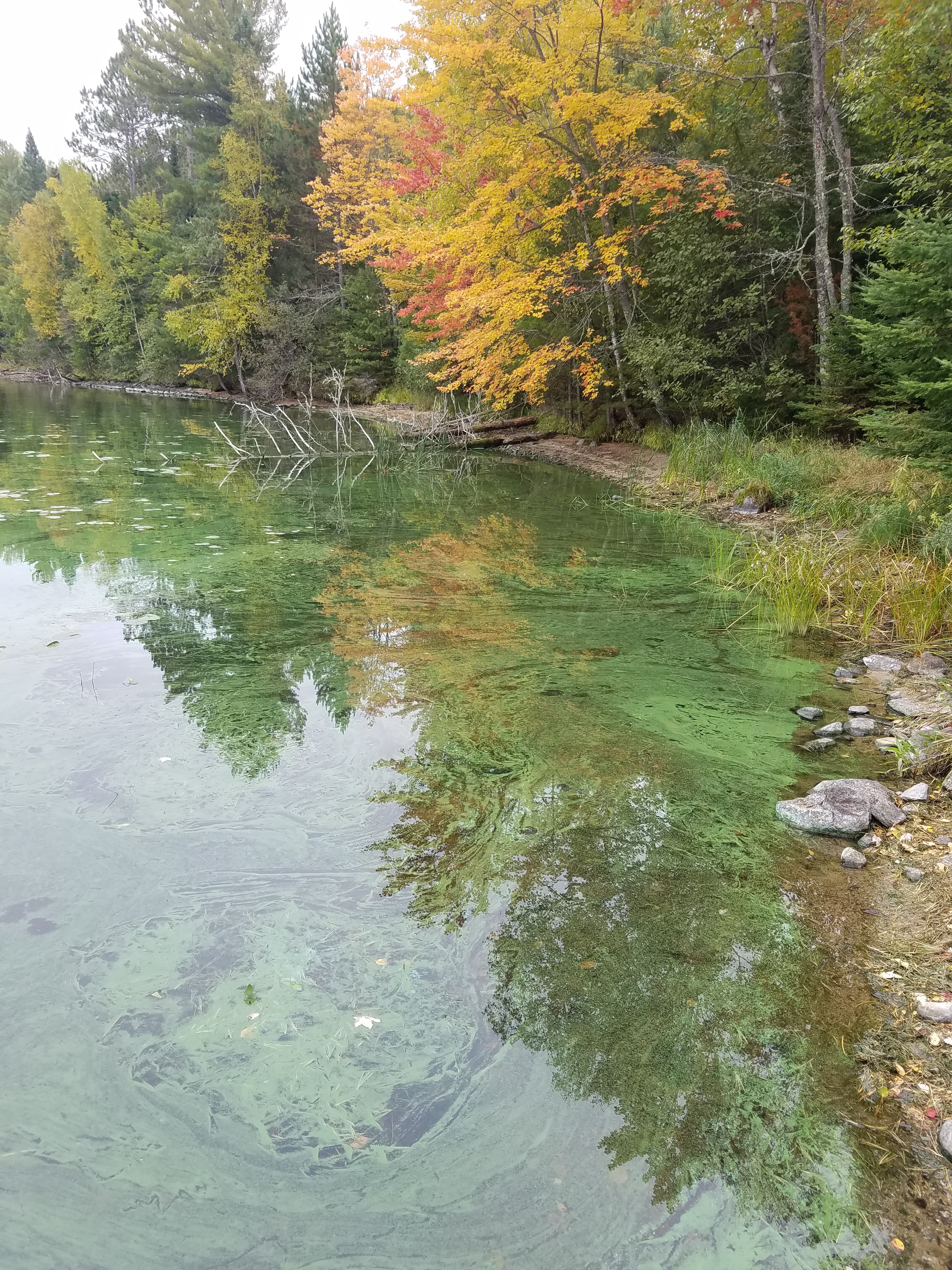Effects of Harmful Algal Blooms on Amphibians and Reptiles are Under-Reported and Under-Represented
USGS ARMI scientists recently published a critical review on what is known about the effects of harmful algal blooms (HABs) on amphibians and reptiles.
HABs are a persistent and increasing problem globally in both freshwater and marine environments, yet we still have limited knowledge about how they affect wildlife. HABs can occur when colonies of algae have abundant resources, grow rapidly, and produce cyanotoxins. This natural phenomenon was first described in the late 1800s but have become more common due to increases in nutrient inputs and availability (e.g., from agriculture or runoff) and global temperatures that favor their growth.
Although semi-aquatic and aquatic amphibians and reptiles have experienced large declines and occupy environments where HABs are increasingly problematic, their vulnerability to HABs remains unclear. The current review was designed to synthesize existing information of the effects of cyanotoxins on amphibians and freshwater reptiles. The information gained by evaluating and synthesizing previous studies and reported mortality events could enhance monitoring and conservation efforts while also guiding future studies on both amphibians and reptiles.
Our review highlights how cyanotoxins can be lethal and negatively affect larval amphibians, but information on effects on reptiles or embryonic and adult amphibians is lacking, apart from a few observational studies. Cyanotoxins can have systemic effects and negatively influence reproductive, digestive, and liver function in amphibians. Given that amphibian and some reptile populations are declining worldwide, it is important to increase monitoring and experimental efforts to understand the singular and synergistic effects of these toxins. It will also be important to better understand the events that cause algal blooms to synthesize and release toxins and effects of HABs that do not produce cyanotoxins. We also propose future near-term and long-term studies that could help clarify the population-level effects of HABs on amphibians and reptiles and could enhance monitoring and management efforts, especially in areas where HABs have been documented consistently.

